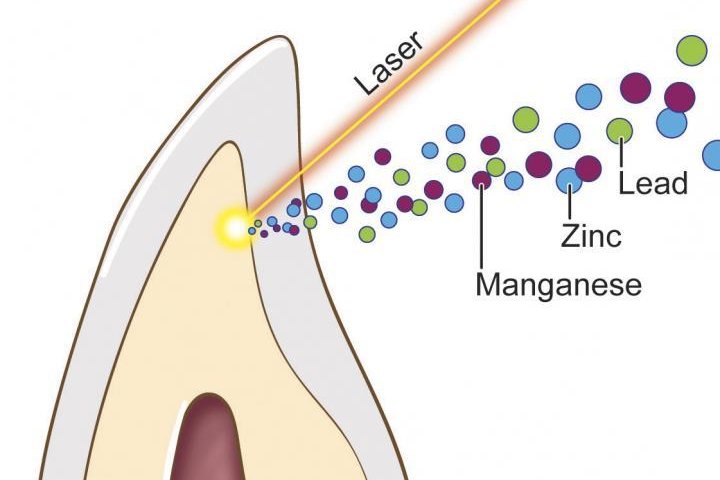This cross-section of a tooth shows laser removal of the dentine layer, in tan, for analysis of metal content. Researchers have found a link between high toxic lead levels in baby teeth and autism. Photo by J. Gregory/Mount Sinai Health System
June 1 (UPI) -- Research from the National Institute of Environmental Health Sciences, or NIEHS, has found a link between elevated lead levels in baby teeth and autism.
The study by NIEHS, part of the National Institutes of Health found that baby teeth from children with autism contained more toxic lead, and less of the essential nutrients zinc and manganese, compared to the baby teeth of children without autism.
"We think autism begins very early, most likely in the womb, and research suggests that our environment can increase a child's risk. But by the time children are diagnosed at age 3 or 4, it's hard to go back and know what the moms were exposed to," Cindy Lawler, head of the NIEHS Genes, Environment, and Health Branch, said in a press release. "With baby teeth, we can actually do that."
Researchers compared patterns of metal uptake in baby teeth from 32 pairs of twins and 12 individual twins, finding smaller differences in patterns of metal uptake when both twins had autism and larger differences in metal uptake when only one twin had autism. They used lasers to extract precise layers of dentine, the hard substance beneath tooth enamel, for metal analysis.
Differences in metal uptake in children with and without autism were found in the months just before and after birth, with higher levels of lead in children with autism throughout development but the largest difference being greatest right after birth.
Researchers found lower uptake of manganese in children with autism before and after birth. Children with autism had lower zinc levels prior to birth, however, the levels increased after birth.
The results validate previous studies showing exposure to toxic metals like lead and deficiencies of essential nutrients like manganese may harm brain development in the womb or in early childhood. Exposure to both lead and high levels of manganese has been associated with autism traits.
"A lot of studies have compared current lead levels in kids that are already diagnosed," Lawler said. "Being able to measure something the children were exposed to long before diagnosis is a major advantage."
The study was published in Nature Communications.















